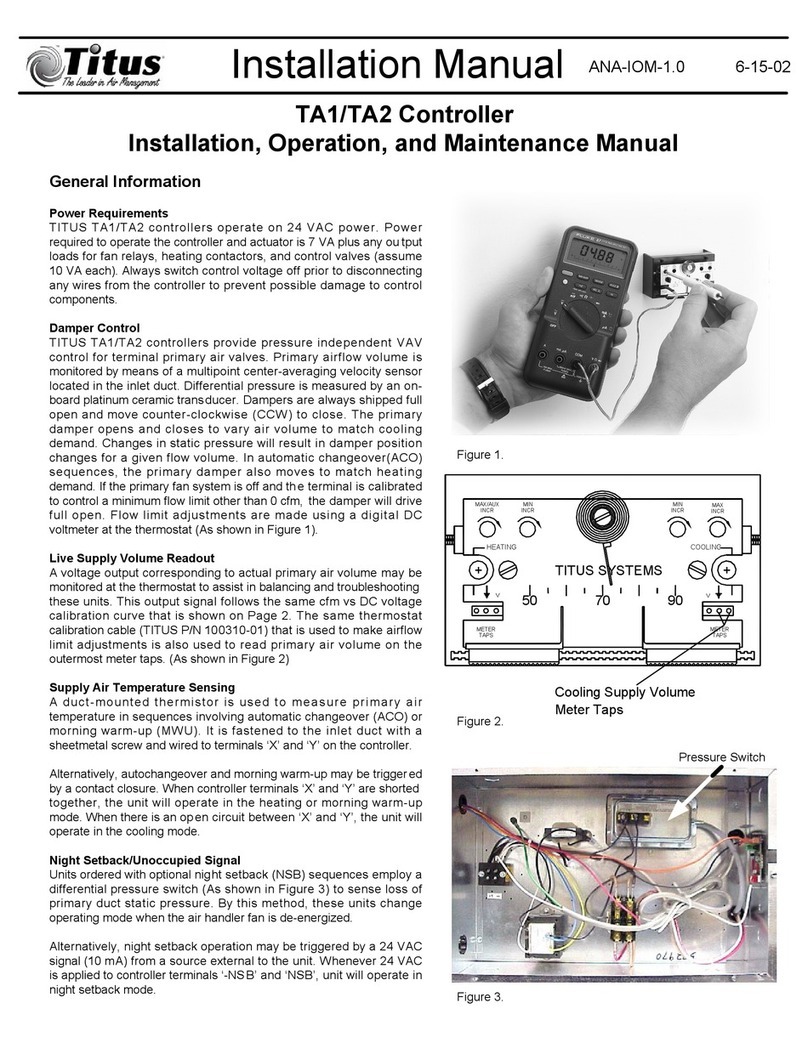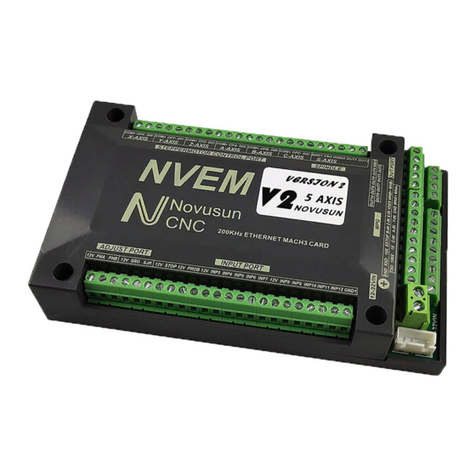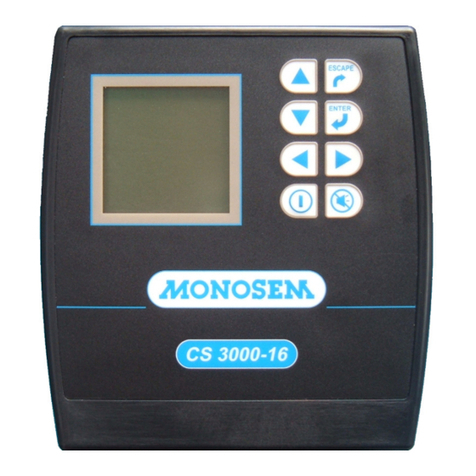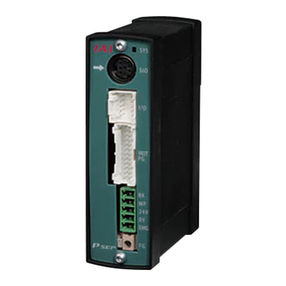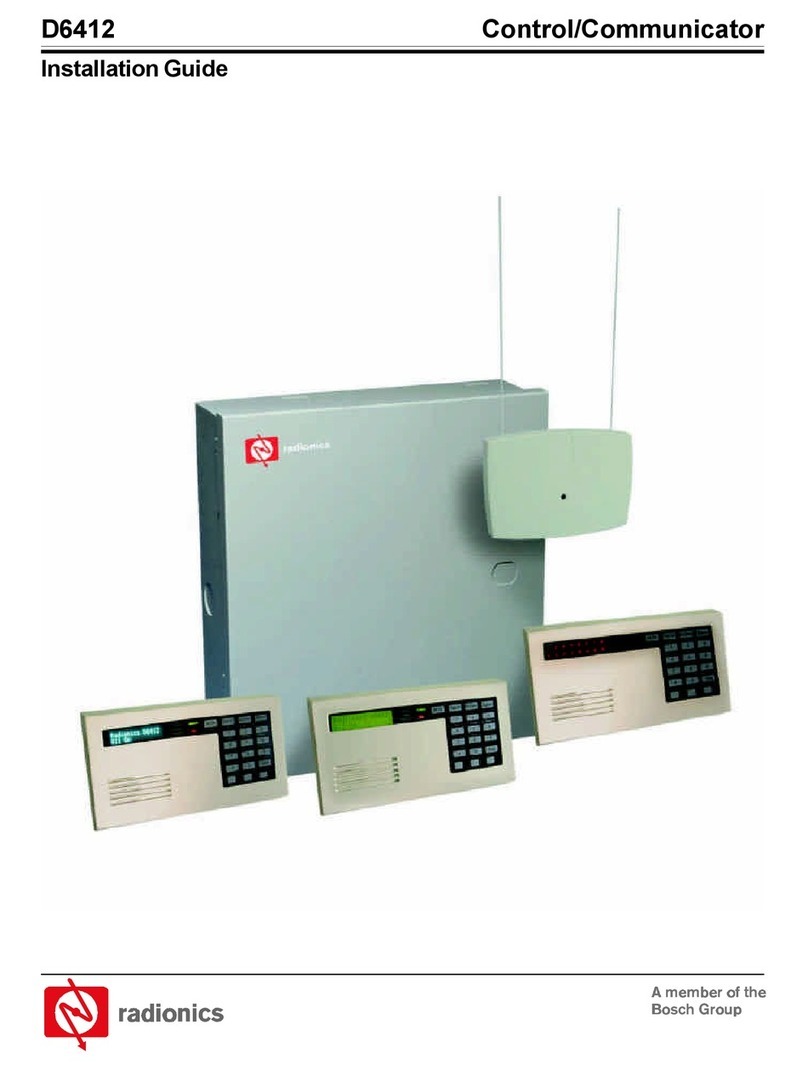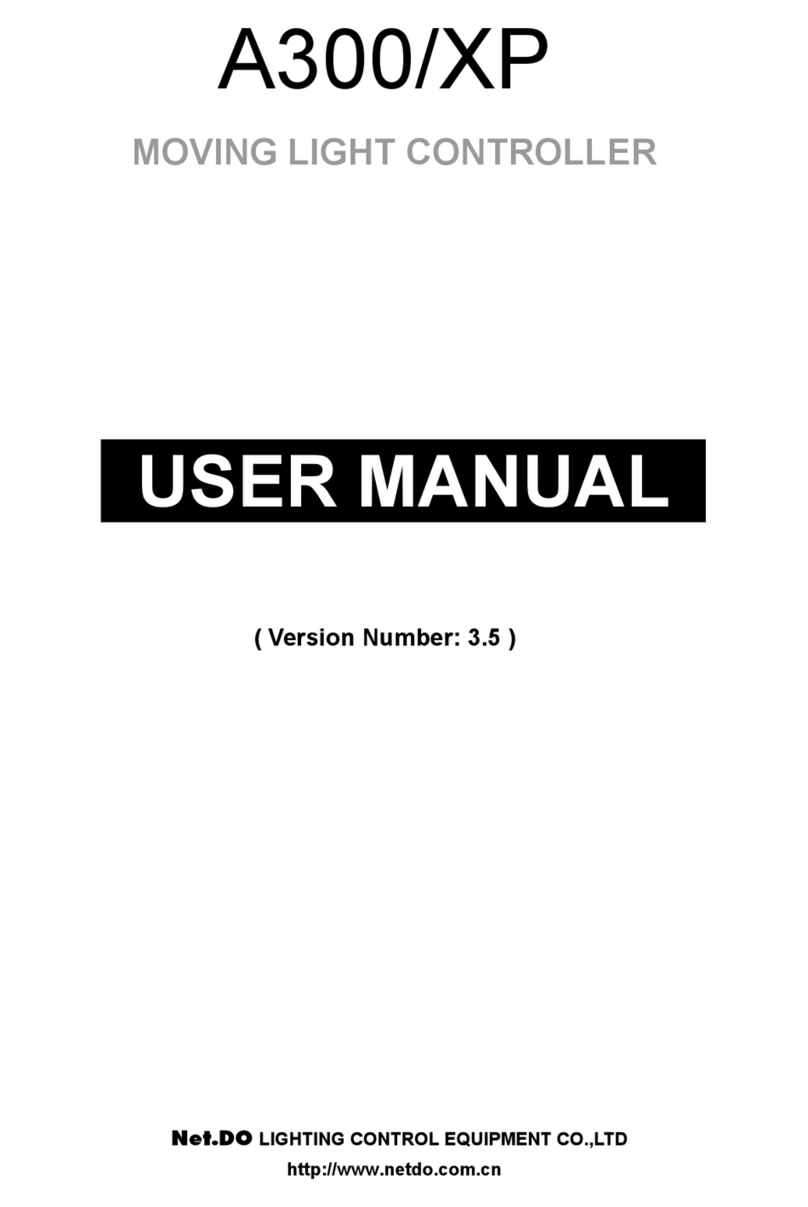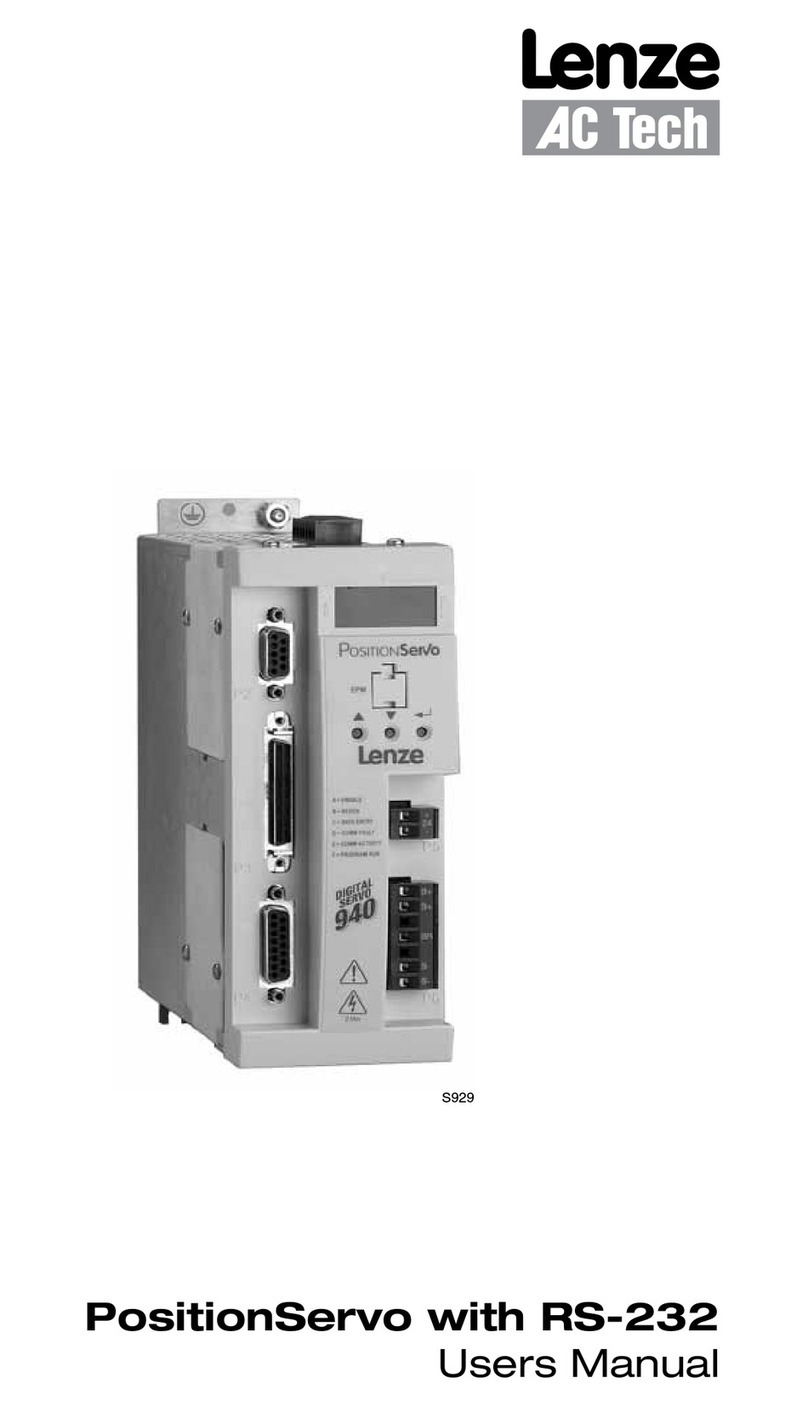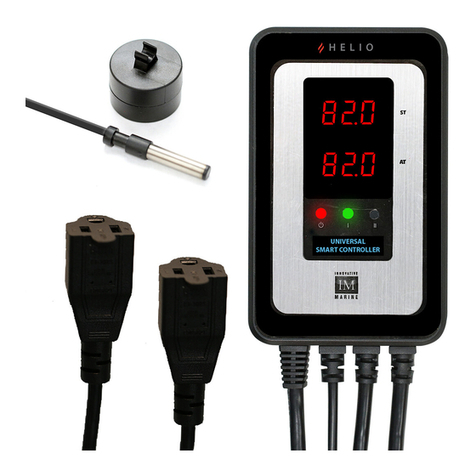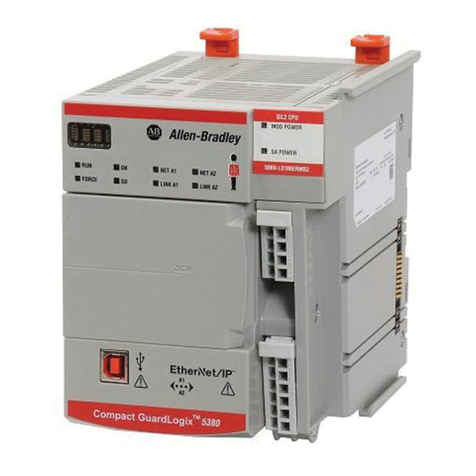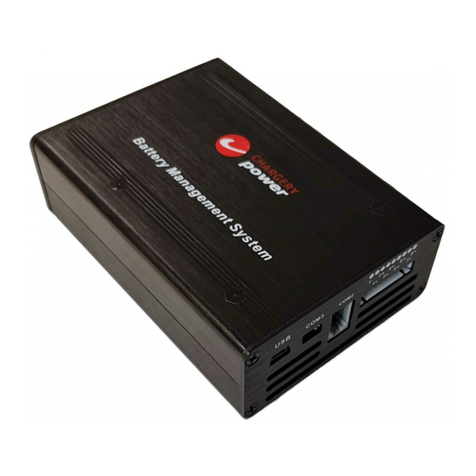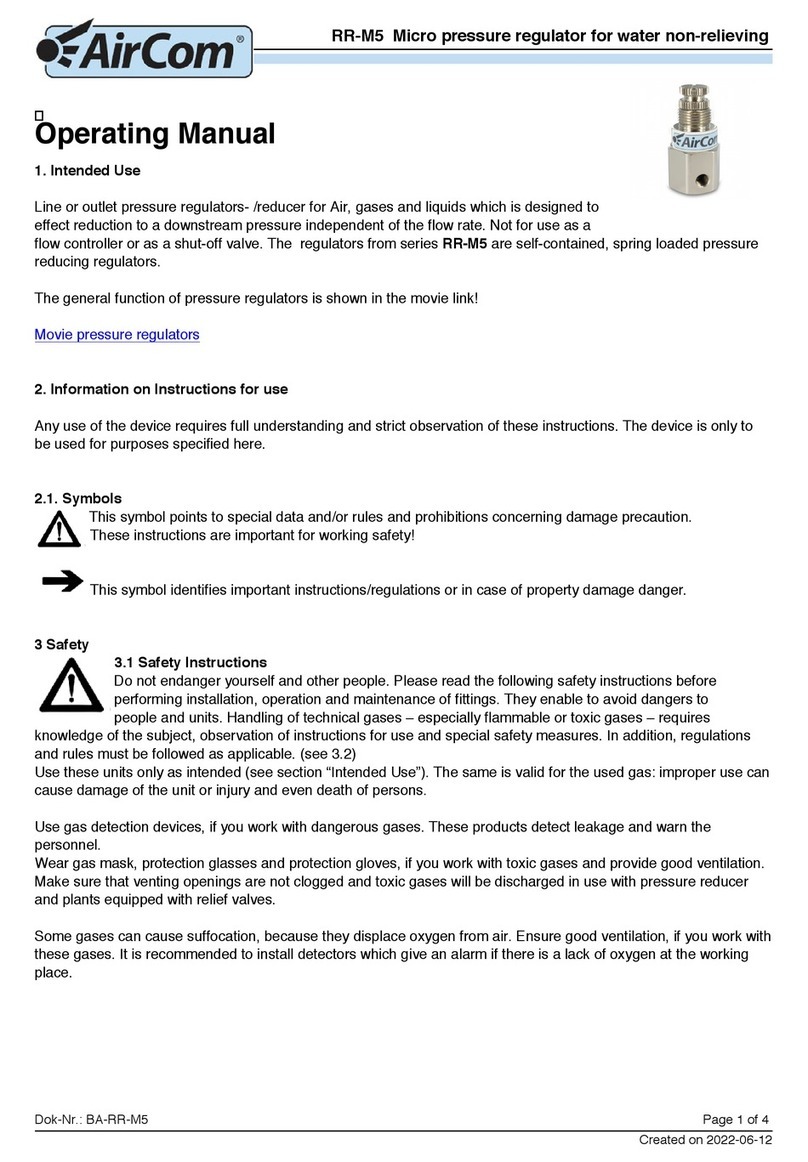Titus BAC-8007 User manual

Redefine your comfort zone. ™ | www.titus-hvac.com
Alpha Dual-Duct
VAV Controller
BAC-8007/BAC-8207
INSTALLATION &
OPERATION MANUAL

2IOM - ALPHA CONTROLLER Redefine your comfort zone. ™ | www.titus-hvac.com
IOM
BAC-8007/BAC-8207
Table of Contents
SECTION 1
About the Controllers
Specifications ..................................................................................................................................................... 4
Safety Considerations ........................................................................................................................................ 7
SECTION 2
Installing the Controller
Setting the Rotation Limits ................................................................................................................................ 9
Mounting ............................................................................................................................ ............................. 10
Connecting Inputs ............................................................................................................. .............................. 11
Connecting Outputs ......................................................................................................................................... 12
Connecting to Sensors ..................................................................................................................................... 13
Connecting to an Ms/Tp Network ................................................................................................................... 14
Connecting an Airflow Sensor ......................................................................................................................... 17
Connecting Power ............................................................................................................................................ 17
Dual-Duct Connections .................................................................................................................................... 18
SECTION 3
Setting Up Dual-Duct Controllers
Network Communications ............................................................................................................................... 19
Setting Temperature Setpoints .......................................................................................... ............................. 20
Setting Airflow Setpoints ................................................................................................... ............................. 21
Setting the Vav Terminal Unit Parameters .................................................................... .................................. 22
Setting Up Local Lighting Control ..................................................................................... .............................. 23
Balancing Airflow ............................................................................................................... ............................. 23

3
IOM - ALPHA CONTROLLER
Redefine your comfort zone. ™ | www.titus-hvac.com
Section 1 — About the Controllers
This section provides a description of the Titus Alpha BAC-8007 and BAC-
8207 VAV controllers. It also introduces safety information. Review this
material before installing or operating the controllers.
The BAC-8007 and BAC-8207 are native BACnet, direct digital controllers
designed for VAV terminal units. An integrated actuator and the supplied
programs make these ideal controllers for temperature setback, overrides,
reheat and other HVAC sequences. Install these versatile controllers in
stand-alone environments or networked to other BACnet devices. As part
of a complete facilities management system, the BAC-8007 and BAC-8207
controllers provide precise monitoring and control of connected points.
•BACnet MS/TP compliant
•Standard VAV control sequences are incorporated to provide pressure
independent control of a dual-duct VAV unit to control heating and
cooling
•On-board airflow sensor for use with a single or multi-point differential
pressure measuring station or pitot tube.
•Control indoor air quality and local lighting
Models:
BAC-8007 Dual-duct VAV controller with 90
second actuator
BAC-8207 Dual-duct VAV controller with 60 second
actuator and UL 864 smoke control application

4IOM - ALPHA CONTROLLER Redefine your comfort zone. ™ | www.titus-hvac.com
IOM
BAC-8007/BAC-8207
Section 1 — About the Controllers
Analog inputs All inputs are configured as analog
Active inputs 2
Passive inputs 4
Air flow sensor 1
Actuator position 1
Key features Standard units of measure
Overvoltage input protection
Connector Spade connectors, 0.25 inch
Conversion 12–bit analog–to–digital conversion
Input range 0–12 volts DC
Outputs, analog 2
Key features Output short protection
Configured as BACnet analog objects
Standard units of measure
Connector Spade connectors, 0.25 inch
Conversion 12–bit analog–to–digital conversion
Output voltage 0–10 volts DC
Output current 30 mA per output, 30 mA total for all
analog outputs
Outputs, binary 4 triacs for external equipment
2 for the internal actuator
Key features Optically isolated triac output
Conversion 12–bit analog–to–digital conversion
Connector Spade connectors, 0.25 inch
Output range Maximum switching 24 VAC at 3 amperes
Communications
BACnet MS/TP EIA–485 operating at rates up to 76.8 kilobaud
Removable screw terminal block
Wire size 12–24 AWG
Sensor jack RJ-45 jack compatible with model STE-8000 and
STE-6000 models with RJ-45 jacks
Supported objects See PIC statement for supported BACnet objects
Control Basic 5 program areas in BAC-8007
6 program areas in BAC-8207
PID loop objects 8
Value objects 60 analog, 32 binary, and 12 multistate
Memory Programs and program parameters are stored
in nonvolatile memory
Auto restart on power failure
SPECIFICATIONS

5
IOM - ALPHA CONTROLLER
Redefine your comfort zone. ™ | www.titus-hvac.com
Section 1 — About the Controllers
Applications programs
Titus Controls supply the BAC-8x07 with programming sequences for
dual-duct VAV applications:
• Dual-duct VAV heating and cooling
• Monitor CO2 to control indoor air quality
•
Control local lighting with motion sensing
• Fan control
• Balancing
• UL 864 smoke controll (BAC-8207 only)
Air flow sensor features
Configured as BACnet analog input object. CMOS differential
pressure 0-2 inches of water (0-500 Pa) measurement range.
Internally linearized and temperature compensated. Span accuracy
4.5% of reading. Barbed connections for 1/4 FR tubing. Range
dependent upon DP pickup, tubing size/length and connections.
Actuator specifications
Torque 40 in-lb. (4.5 N•m)
Angular rotation 0 to 95°
Adjustable end stops at 45° and 60° rotation
Motor timing,
BAC-8007 90 sec./90° at 60 Hz
108 sec./90° at 50 Hz
Motor timing,
BAC-8207 60sec./90° at 60 Hz
72 sec./90° at 50 Hz
Shaft size Directly mounts on 3/8 to 5/8 inch
(9.5 to 16 mm) round or 3/8 to 7/16 inch (9.5 to
11 mm) square damper shafts
Regulatory UL 916 Energy Management Equipment
FCC Class B, Part 15, Subpart B
BACnet Testing Laboratory listed as an
application specific controller (ASC)
UL 864 smoke controls (BAC-8207 only)
Installation
Supply voltage 24 volts AC, -15%, +20% 5 VA
Weight 13.2 ounces (376 grams)
Case material Flame retardant plastic
Environmental limits
Operating 32 to 120° F (0 to 49° C)
Shipping –40 to 140° F (–40 to 60° C)
Humidity 5–95% relative humidity (non-condensing)
SPECIFICATIONS (continued)

6IOM - ALPHA CONTROLLER Redefine your comfort zone. ™ | www.titus-hvac.com
IOM
BAC-8007/BAC-8207
Section 1 — About the Controllers
DIMENSIONS
Table 1-1 BAC- 8000 dimensions
A B C D E F G
6.53 in . 4 .89 in . 4 .25 in . 0 .77 in . 6 .00 in . 2 .14 in . 1 .92 in .
166 mm 124 mm 108 mm 19 mm 152 mm 54 mm 49 mm
A
B
D
G
F
E
C

7
IOM - ALPHA CONTROLLER
Redefine your comfort zone. ™ | www.titus-hvac.com
Section 1 — About the Controllers
SAFETY CONSIDERATIONS
Titus assumes the responsibility for providing you a safe product and
safety guidelines during its use. Safety means protection to all individuals
who install, operate, and service the equipment as well as protection of
the equipment itself. To promote safety, we use hazard alert labeling in this
manual. Follow the associated guidelines to avoid hazards.
DANGER Danger represents the most severe hazard
alert. Bodily harm or death will occur if danger
guidelines are not followed.
WARNING Warning represents hazards that could result in
severe injury or death.
CAUTION Caution indicates potential personal injury or
equipment or property damage if instructions are
not followed.
NOTE Notes provide additional information that is
important.
DETAIL Provides programing tips and shortcuts that may
save time.

8IOM - ALPHA CONTROLLER Redefine your comfort zone. ™ | www.titus-hvac.com
IOM
BAC-8007/BAC-8207
Section 2 — Installing the Controller
This section provides important instructions and guidelines for installing
the BAC-8007 and BAC-8207 controllers. Carefully review this information
before installing the controller.
Installing the VAV controller includes the following topics that are covered
in this section.
•Setting the rotation limits on page 9
•Mounting on page 10
•Connecting Inputs on page 14
•Connecting Outputs on page 12
•Connecting to an MS/TP Network on page 14
•Connecting an Airflow Sensor on page 17
•Connecting Power on page 17
In addition to the topics, see the section Dual-duct connections on page
18 for connecting the controllers to a TSP-8000 actuator for dual-duct
operation.

9
IOM - ALPHA CONTROLLER
Redefine your comfort zone. ™ | www.titus-hvac.com
Before mounting the controller, set the rotation limits with the supplied
stop screw. Installing the stop screw limits the shaft rotation to either 45
or 60 degrees.
CAUTION
Before setting the rotation limits on the controller, refer to the damper
position specifications in the VAV control box to which the controller
will be attached. Setting rotation limits that do not match the VAV
damper may result in improper operation or equipment damage.
To set the rotational limits:
1. Turn the controller over so you have access to the back.
2. Manually rotate the actuator fully clockwise as viewed from the back.
3. Remove the stop screw from its storage location and clean any debris
from the threads.
4. Insert the screw into the correct stop position hole.
5. Tighten the screw only until the head touches the plastic in the
bottom of the recess.
Section 2 — Installing the Controller
SETTING THE ROTATION LIMITS
Illustration 2-1 Controller stop selections

10 IOM - ALPHA CONTROLLER Redefine your comfort zone. ™ | www.titus-hvac.com
IOM
BAC-8007/BAC-8207
Section 2 — Installing the Controller
Mount the controller inside of a metal enclosure. To maintain RF emissions
specifications, use either shielded connecting cables or enclose all cables
in conduit.
Mount the controller directly over the damper shaft. A minimum shaft
length of 2.0 inch (51 mm) is required.
NOTE
The controller is designed to directly mount to 3/8 to 5/8 inch (9.5
to 16mm) round or 3/8 to 7/16 (9.5 to 11mm) square damper shafts.
Mount the controller close enough to the pitot tubes to keep the tubing
length to a minimum. In typical installations the controller’s inputs and
sensors are within 24 inches of each other.
Mount the controller as follows:
1. Loosen the nuts on the U-bolt until the shaft can fit through the collar.
2. Place the controller on the damper shaft in the approximate final
position. Position the controller loosely against the mounting surface
so that the mounting bushing can float freely in the mounting tab.
3. Center the mounting bushing in the slot of the mounting tab and
secure it using a #8 self-tapping screw.
4. Manually position the damper in the full open position.
5. Adjust the drive hub as follows:
a. If the damper rotates counter clockwise to close, depress the
gear disengagement button and rotate the drive hub to the full
clockwise position then release the button.
b. If the damper rotates clockwise to close, depress the gear
disengagement button and rotate the drive hub to the full
counter clockwise position then release the button.
6. Lock the hub to the shaft by evenly tightening the V-bolt nuts to 30
to 35 in-lbs.
MOUNTING
Illustration 2-2 Controls and indicators

11
IOM - ALPHA CONTROLLER
Redefine your comfort zone. ™ | www.titus-hvac.com
Section 2 — Installing the Controller
Discharge air temperature: Connect a 10k , Type 3 thermistor temperature
probe to the discharge air temperature input. The input includes the internal
pull-up resistor. An STE-1405 sensor is suitable for this application. Follow
the instructions supplied with the sensor for installation. See Temperature
Setpoints on page 20 for setting up discharge air temperature limiting that
requires this input sensor.
Space Temperature Input: The space temperature input is connected only
through the RJ-45 thermostat and sensor input jack. It is a configured
as an analog input for STE-6010, STE-6014, and STE-6017 sensors. If an
STE-8000 sensor is connected to the controller, this input is ignored. See
Connecting to Sensors on page 13.
Space Setpoint: The space setpoint input is connected only through the
RJ-45 thermostat and sensor input jack. It is a configured for the setpoint
dials on STE-6014 or STE-6017 sensors. If an STE-6010 or STE-8000 sensor
is connected to the controller, this input is ignored. See Connecting to
Sensors on page 13.
The BAC-8007 and BAC-8207 controllers have preconfigured analog inputs to support the supplied programs. The inputs cannot be changed to binary or
accumulator inputs. Only six inputs have externally available physical terminals. All of the inputs are preconfigured for the application programs supplied
in the dual-duct controllers and are listed in Table 2-1.
Primary Duct Pressure: The primary duct pressure input is an internal
measurement from the airflow sensor.
Secondary Duct Pressure: The secondary duct pressure input is an analog
input preconfigured to connect to the P Out terminal of a TSP-8000 series
actuator for dual-duct operation. The TSP-8000 P Out represents actual
airflow detected by the TSP-8000 airflow sensor. See the section Dual-duct
Connections on page 18 for connection details.
Secondary Damper Position: The secondary damper position input
is preconfigured to connect to the position potentiometer of an TSP-
8000 series actuator for dual-duct operation. See the section Dual-duct
Connections on page 18 for connection details.
CO2 input: Connect a CO2 sensor with an active output to the CO2 input.
Set the sensor for a voltage output. An STE-1001 sensor is suitable for this
application. Follow the instructions supplied with the sensor for sensor
power, installation and calibration.
Primary Damper Position: The primary damper position input is
preconfigured as an analog input that represents the position of the
internal damper. Primary Duct Pressure The primary duct pressure input is
an internal measurement from the airflow sensor.
CONNECTING INPUTS
Table 2-1 BAC-8007 and BAC-8207 input objects
Illustration 2-3 Discharge air temperature
Illustration 2-4 Connections for CO2 sensor
Object Function Name Unit Location Pull up
AI1 Discharge Air Temperature DISCHARGE AIR °F Terminal block 10kΩ
AI2 Space Sensor SPACE SENSOR °F RJ-45 10kΩ
AI3 Space Setpoint SPACE SETPOINT °F RJ-45 10kΩ
AI4 Primary Duct Pressure PRIMARY DUCT wc Internal airow sensor N/A
AI5 Secondary Duct Pressure SECONDARY DUCT wc Terminal block None
AI6 Secondary Damper Position SECONDARY POS Volts Terminal block 10kΩ
AI7 CO2 CO2 PPM Terminal block None
AI8 Primary Damper Position PRIMARY POS Volts Internal damper position N/A

12 IOM - ALPHA CONTROLLER Redefine your comfort zone. ™ | www.titus-hvac.com
IOM
BAC-8007/BAC-8207
Damper Clockwise and Clockwise: The damper outputs are binary output
objects that control the motion of the internal damper.
Analog Heat: The analog heat output controls modulating analog reheat.
This output is active only if the controller is set up for reheat. For staged
reheat applications, use an REE-5001 relay.
Fan Speed: Controls the speed of a variable speed fan if the controller is
set up for fan operation.
Fan Start/Stop: The fan start output is preconfigured to either start or stop
a single speed fan or enable a multispeed fan. The output is a triac that
can switch up to 1 ampere at 24 volts AC.
Secondary Damper Clockwise and Counterclockwise: The secondary
damper output terminals are preconfigured to control the position of the
damper of a TSP-8000 series actuator for dual-duct operation. The outputs
are triacs that can switch up to 1 ampere at 24 volts AC. See the section
Dual-duct Connections on page 18.
Section 2 — Installing the Controller
The BAC-8007 and BAC-8207 controllers have eight preconfigured outputs to support the supplied programs. Only six have externally available physical
terminals. All of the outputs are preconfigured for the application programs supplied in the in the dual-duct controllers and are listed in Table 2-2.
Table 2-2 BAC-8007 and BAC-8207output objects
Illustration 2-5 Modulating heat output
Illustration 2-7 Fan start output
Illustration 2-6 Fan speed output
Object Function Name False Value True Value Default Value Type
BO1 Damper Clockwise DAMPER CW Neutral Clockwise Neutral Internal
BO2 Damper Counter Clockwise DAMPER CCW Neutral Counterclockwise Neutral Internal
AO3 Analog Heat ANALOG HEAT 00-10 VDC
AO4 Fan Speed FAN SPEED 0 0-10 VDC
BO5 Fan Start/Stop FAN On Off Off Triac
BO6 Secondary Damper Clockwise SEC damper cw Neutral Clockwise Neutral Triac
BO7 Secondary Damper Counterclockwise Sec damper ccw Neutral Counterclockwise Neutral Triac
BO8 Lighting Heat/lite On Off Off Triac
CONNECTING OUTPUTS

13
IOM - ALPHA CONTROLLER
Redefine your comfort zone. ™ | www.titus-hvac.com
Section 2 — Installing the Controller
Connect any of the following sensors to the RJ-45 thermostat and sensor jack.
•STE-8001STE-8201
•STE-6010
•STE-6014
•STE-6017
Link the controller to sensors with standard straight-through Ethernet
cables up to 75 feet long. See the installation guide supplied with the
sensors for complete sensor installation instructions.
No programming or configuration is required for the supported sensors.
The controller is configured to automatically detect which type of sensor
is connected to it.
Local lighting: The lighting output is preconfigured to work with the
motion sensor in an STE-8201 sensor to automatically control lights
located in the same space as the VAV. The output is a triac that can switch
up to 1 ampere at 24 volts AC.
Illustration 2-8 Lighting output
CONNECTING TO SENSORS
Illustration 2-9 Connecting to a sensor

14 IOM - ALPHA CONTROLLER Redefine your comfort zone. ™ | www.titus-hvac.com
IOM
BAC-8007/BAC-8207
Section 2 — Installing the Controller
The BAC-8000 series controllers are BACnet MS/TP compliant controllers.
Connect them only to a BACnet MS/TP network.
See Application Note AN0404A, Planning BACnet Networks for additional
information about installing controllers.
Connections and wiring
Use the following principles when connecting a controller to an
MS/TP network:
•Connect no more than 128 addressable BACnet devices to one MS/TP
network. The devices can be any mix of controllers or routers.
•To prevent network traffic bottlenecks, limit the MS/TP network size
to 60 controllers.
•Use 18 gauge, twisted pair, shielded cable with capacitance of no
more than 51 picofarads per foot for all network wiring. Belden cable
model #82760 meets the cable requirements.
•Connect the -A terminal in parallel with all other - terminals.
•Connect the +B terminal in parallel with all other + terminals.
•Connect the shields of the cable together at each controller. For KMC
BACnet controllers use the S terminal.
•Connect the shield to an earth ground at one end only.
•Use a KMD–5575 repeater between every 32 MS/TP devices or if the
cable length will exceed 4000 feet (1220 meters). Use no more than
four repeaters per MS/TP network.
•Place a KMD–5567 surge surpressor in the cable where it exits a
building.
CONNECTING TO AN MS/TP NETWORK
Illustration 2-10 MS/TP network connection

15
IOM - ALPHA CONTROLLER
Redefine your comfort zone. ™ | www.titus-hvac.com
Section 2 — Installing the Controller
NOTE
The MS/TP terminals are labeled -A, +B and S. The S terminal is
provided as a connecting point for the shield. The terminal is not
connected to the ground of the controller. When connecting to
controllers from other manufacturers, verify the shield connection is
not connected to ground.
Illustration 2-11 MS/TP network wiring

16 IOM - ALPHA CONTROLLER Redefine your comfort zone. ™ | www.titus-hvac.com
IOM
BAC-8007/BAC-8207
Section 2 — Installing the Controller
End of the line termination switches
The controllers on the physical ends of the EIA-485 wiring segment must
have end-of-line termination installed for proper network operation. Set
the end-of-line termination to On using the EOL switches.
Illustration 2-13 shows thez position of the BAC-8000 End-of-Line switches
associated with the MS/TP inputs.
CONNECTING TO AN MS/TP NETWORK (CONTINUED)
Illustration 2-12 End of line termination
Illustration 2-13 Location of EOL switch

17
IOM - ALPHA CONTROLLER
Redefine your comfort zone. ™ | www.titus-hvac.com
Section 2 — Installing the Controller
Power
terminals
Illustration 2-14 Airow sensor inputs
Illustration 2-15 Power terminals and jumper
Illustration 2-16 Power connections
An airflow sensor is incorporated as one of the inputs to the controller.
Remove the plugs and connect the tubing from the pitot assembly to the
airflow sensor inputs next to the drive hub. (See Illustration 2-14). The
airflow sensor is programmed as Input 1.
The controllers require an external, 24 volt, AC power source. Use the
following guidelines when choosing and wiring transformers.
•Use a Class-2 transformer of the appropriate size to supply power to
the controllers. Titus recommends powering only one controller from
each transformer.
•Do not run 24 volt, AC power from within an enclosure to
external controllers.
Connect the 24 volt AC power supply to the power terminal block on
the lower right side of the controller near the power jumper. Connect
the ground side of the transformer to the ground terminal and the AC
phase to the phase ~ terminal. Power is applied to the controller when the
transformer is powered.
CONNECTING AN AIRFLOW SENSOR
CONNECTING POWER

18 IOM - ALPHA CONTROLLER Redefine your comfort zone. ™ | www.titus-hvac.com
IOM
BAC-8007/BAC-8207
Section 2 — Installing the Controller
The BAC-8007 and BAC-8207 controllers are configured by the manufacturer for dual-duct operation. Connect the controllers to a TSP-8000 series
actuator as shown in the illustration Dual-duct wiring diagram below.
DUAL-DUCT CONNECTIONS
Illustration 2-17 Dual-duct wiring diagram

19
IOM - ALPHA CONTROLLER
Redefine your comfort zone. ™ | www.titus-hvac.com
Section 3 — Setting up Dual-Duct Controllers
Before connecting the controller to a BACnet MS/TP network, configure the
following network parameters with either a BACnet operator workstation
or temporarily connecting an STE-8001 or STE-8201 to the controller.
Device instance: Set from 0 to 4,194,302. A device instance number
must be unique across the BACnet internetwork.
Baud: Valid baud settings are 9600, 19200, 38400, and 76800.
MAC: Set from 0 to 127. Must be unique on the MS/TP network to
which the controller is connected.
NETWORK COMMUNICATIONS
The topics in this section cover setting up the BAC-8007 and BAC-8207
for dual-duct VAV operation. These are advanced topics for controls
technicians and engineers.
The BAC-8007 and BAC-8207 dual-duct VAV controllers are set up by the
manufacturer to operate as soon as power is applied and connected as
described in the section Installing the Controller beginning on page 9.
Setting up the dual-duct VAV controllers may include setting BACnet
objects with a BACnet Operator Workstation such as TotalControl. The
objects may also be set up with a STE-8001 or STE-8201. The following
topics are covered in this section.
•Setting Temperature Setpoints on page 20
•Setting Airflow Setpoints on page 21
•Setting the VAV Terminal Unit Parameters on page 22
•Setting Up Local Lighting control on page 23
•Network Communications on page 19
CAUTION
Change only the present values of the objects listed in this section.
Changing any other objects or properties will result in improper
operation.

20 IOM - ALPHA CONTROLLER Redefine your comfort zone. ™ | www.titus-hvac.com
IOM
BAC-8007/BAC-8207
Section 3 — Setting up Dual-Duct Controllers
The space temperate setpoints listed in Table 3-1, “Temperature setpoints,”
below are used to control the controller VAV operation. The temperature
setpoints have default values, but may be manipulated depending on
which type of wall sensor is connected to the controller.
Occupied cooling and heating setpoints: These setpoints are user
controlled space setpoints that originate from an attached sensor. If no
sensor is attached the values for these setpoints are manually entered by
a controls technician.
Unoccupied cooling and heating setpoints: The unoccupied setpoints
are manually entered values to set the heating and cooling temperature
when the space is unoccupied.
Minimum cooling setpoint: A manually entered value to limit the
occupied cooling setpoint regardless of the value entered by the user.
Maximum heating setpoint: A manually entered value to limit the
occupied heating setpoint regardless of the value entered by the user.
Minimum setpoint differential: Sets the minimum temperature separation
between occupied heating and cooling setpoints.
Standby differential: This differential is added or subtracted from the
occupied temperature setpoints to calculate the standby setpoints.
SAT changeover temperature: Sets the supply air temperature at which
the controller will change from heating to cooling. The changeover takes
place when the supply air temperature is 2° above or below the discharge
air temperature setpoint.
SETTING TEMPERATURE SETPOINTS
Object Description Name Default
AV5 Occupied Cooling Setpoint OCC CL STPT 74°F
AV6 Occupied Heating Setpoint OCC HT SPT 70°F
AV7 Unoccupied Cooling Setpoint UNOCC CL STPT 80°F
AV8 Unoccupied Heating Setpt UNOCC HT STPT 64°F
AV9 Minimum Cooling Setpt MIN CL STPT 70°F
AV10 Maximum Heating Setpoint MAX HT STPT 76°F
AV11 Minimum Setpoint Differential MIN STPT DIFF 4°F
AV12 Standby Differential STBY DIFF 3°F
AV37 SAT Changeover Temp SAT CHANGEOVER 75°F
Table 3-1 Temperature setpoints
This manual suits for next models
1
Table of contents
Other Titus Controllers manuals
Popular Controllers manuals by other brands
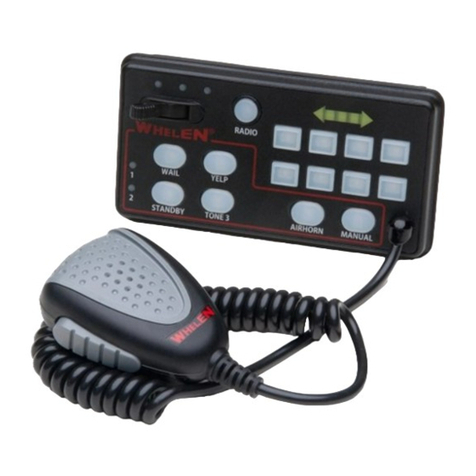
Whelen Engineering Company
Whelen Engineering Company 295SHA1 installation guide
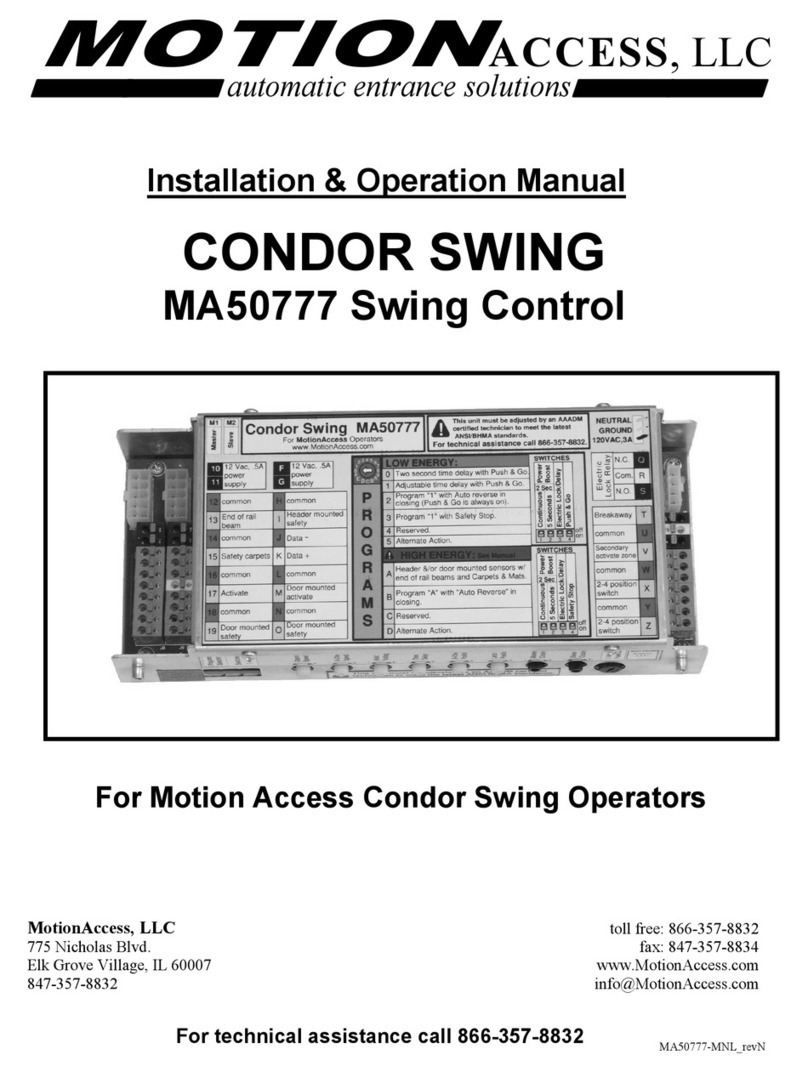
Motion Access
Motion Access CONDOR SWING MA50777 Installation & operation manual
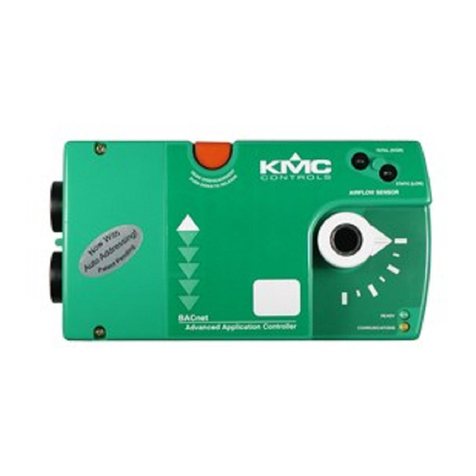
KMC Controls
KMC Controls BAC-7003 installation guide
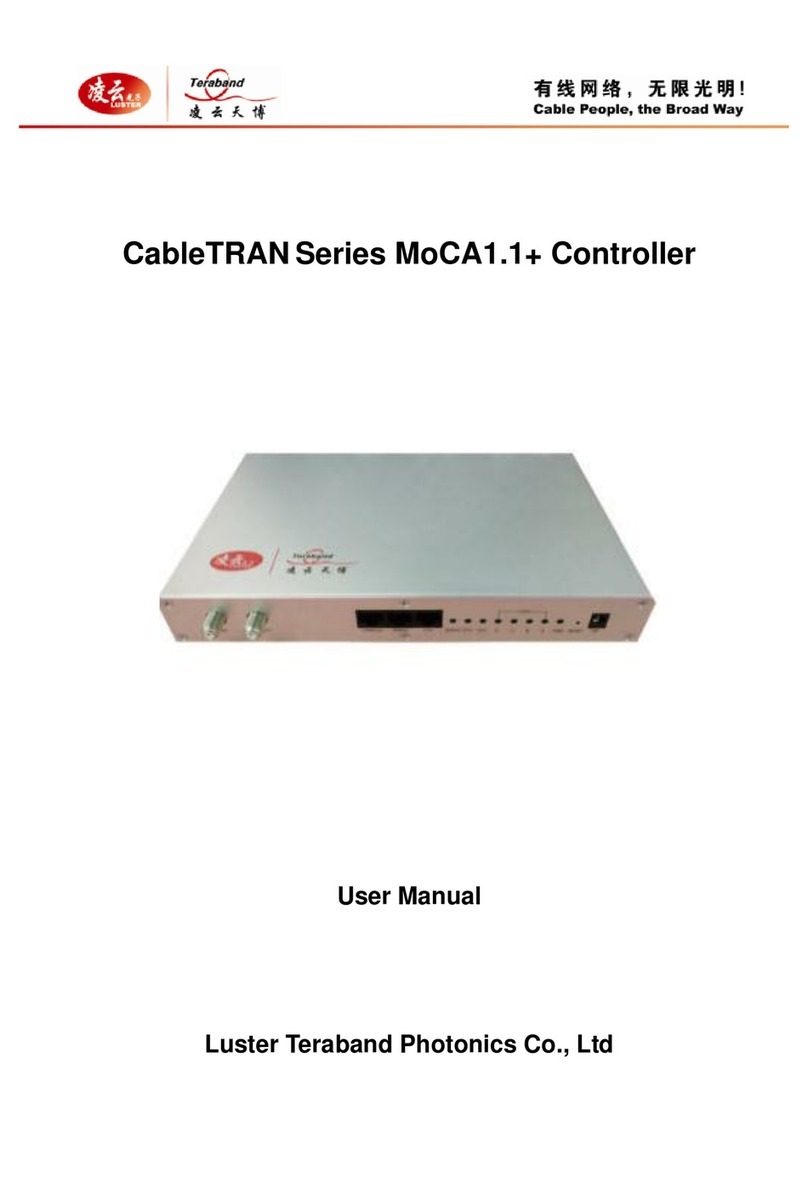
Luster Teraband Photonics
Luster Teraband Photonics CableTRAN MoCA1.1 user manual
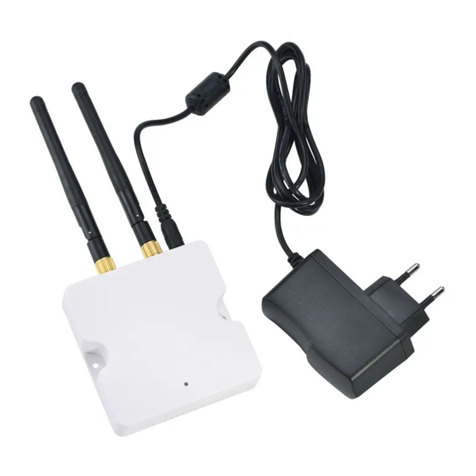
SLV
SLV 470674 operating manual

Uponor
Uponor Smatrix Wave X-165 Software Upgrade
